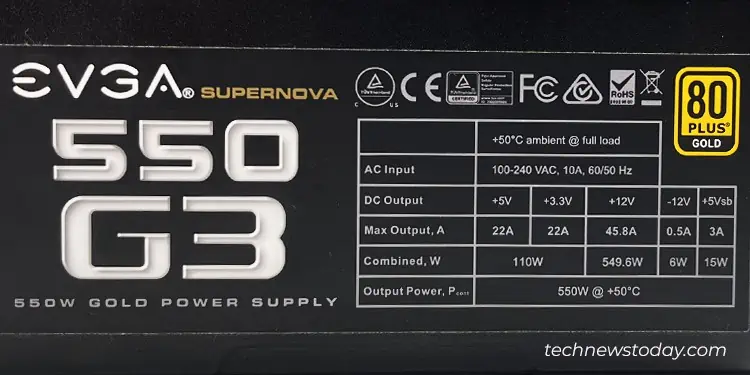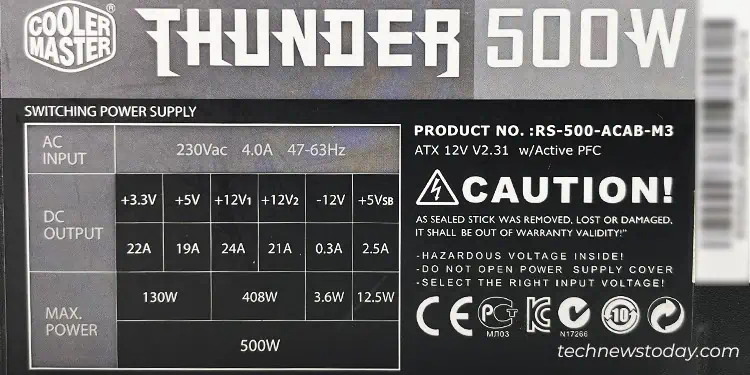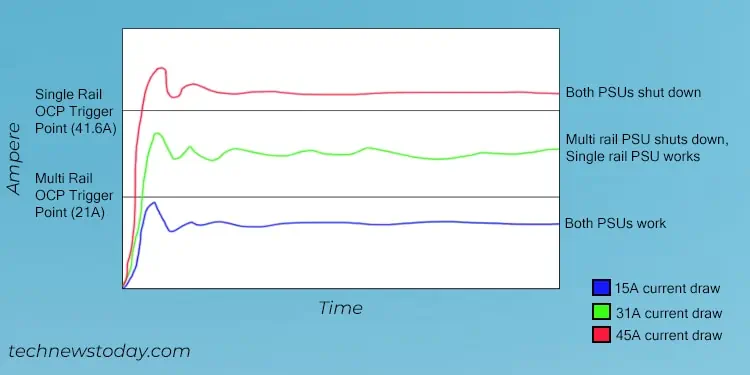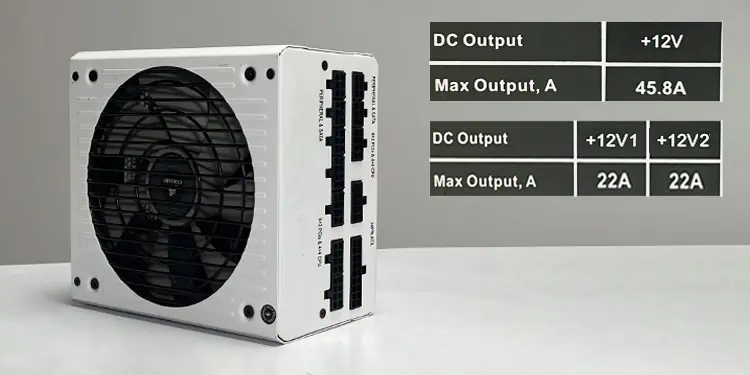Whenever you are choosing a PSU for your build, the most important factor to consider is the total power requirement. Then comes the other factors like modularity, power supply efficiency, and power distribution pattern.
Talking about the power distribution configuration, you will find two kinds of PSUs that manufacturers offer—single rail and multi rail.
Ever since Intel made it optional to implement multi-rail design, most PSU manufacturers are rather focused on single-rail. But that doesn’t necessarily mean multi-rail has gone obsolete. For instance, you can still find plenty of multi-rail products from “Be quiet!”
Choose a single-rail PSU if you want to provide adequate wattage headroom for your components and run them without tripping. They also perform quite well when you are overclocking. On the other hand, opt for a high-wattage multi-rail PSU if you want to run high-end components with additional protection from short circuits.
What is Single-Rail PSU
As you might have already guessed, these are the power supplies with a single +12V rail. All the components in your PC get power supply through this solitary rail.
Below is my single-rail EVGA Supernova 550 G3, a 550 watt PSU with maximum current limit of 45.8 Ampere.

What is Multi Rail PSU
Multi-rail PSUs are the ones that come with multiple +12V rails. To be more precise, the +12V rail is split into two or more rails with individual current limits.
More often, the PSU manufacturers tend to provide a single-rail for the GPU and the remaining one for your motherboard, CPU and SATA drives.
Here’s one of the multi-rail PSUs that I got from Cooler Master. As you can see, it is a 500 watt PSU with two +12V rails, one with the maximum current limit of 24 Ampere and another one with 21 Ampere.

You might also find some PSUs like the Be Quiet! Dark Power 12, which comes with a dedicated switch to change modes from single to multi-rail. It can toggle between a massive 12V rail or four +12V rails, which support a maximum current draw of 32A, 32A, 40A, and 40 Ampere, respectively.
Differences Between Single-Rail and Multi-Rail PSU
As discussed earlier, the main difference between the single-rail and multi-rail PSU is their power distribution pattern. Besides, the “OverCurrentProtection” circuit configuration is what differentiates them significantly.
While the single-rail PSUs are equipped with a single “OCP” circuit, multi-rail PSUs have this protection feature on each of the +12V rails.
Suppose that you have two PSUs, one single-rail and another multi-rail, each of 500 watts. Single-rail PSU has one +12V rail with maximum current limit of 41.6A and multi-rail PSU has two +12V rails, with 21A and 20A current limit respectively.
In case of a single-rail PSU, the OCP will only kick in when the current draw exceeds 41.6A. But the multi-rail PSUs will shut down as soon as the current draw crosses the threshold of either 20A or 21A, depending on the rail.

This basically demonstrates that the single-rail PSUs have an adequate headroom for accommodating the high-power components. This also holds true if you are into overclocking your CPU, GPU or RAM.
Having said that, single-rail PSUs are more prone to damage in case of a short circuit. PSUs generally integrate the “short circuit protection” feature to monitor the shorts occurring in the output rails and protect themselves from possible damages and fire hazards.
But this feature may not trigger if the resistance of the short is higher than 0.1 Ohms. In such cases, the PSU has to rely on the OCP to protect itself.
However, if the OCP limit is higher, the component may fry up before reaching the limit. So a multi-rail PSU will ensure better protection against short circuits.
Verdict—Single-Rail Vs Multi-Rail PSU
Using a single or multi-rail PSU does not make a significant difference until it is a branded one, meets the power requirement of your system and has a higher efficiency rating.
It would be an added advantage if the PSU comes with the full suite of protection features, like OCP, including OVP, UVP, OTP, and SCP. At the end of the day, the choice is all yours.
The only time you might opt for a single-rail PSU is when there is a certain hardware component in your system that draws an excessive amount of power, potentially triggering the PSU’s overcurrent protection.
For example, when you’re pushing the limits of your GPU or CPU through aggressive overclocking.
On the other hand, get a multi-rail PSU if you want to safeguard your system from short circuits. Multi-rail PSUs, due to their low maximum-current-limit, can respond more quickly in the event of a short circuit, which could eventually help protect your hardware.
Make sure you only get a high-wattage PSU if you opt for a multi-rail one. A low-wattage multi-rail PSU will trigger “OCP” much faster and cause system shut down, if you have a high system power requirement.

